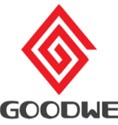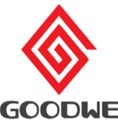News & Events
Global Landscape of Residential Energy Storage
08.04.2016Global Landscape of Residential Energy Storage
ees International met Dr Sung Hoon Jang, Senior Vice President of LG Chem ESS Battery Division, to talk about the
status of the global energy market, governmental policies, interesting markets for residential energy storage as well
as Asian storage market.
ees: Dr Jang, what is the current status of the global energy market and what makes it gather momentum?
What effect will it have on the energy storage industry?
As public interest on climate change is rising and the importance of clean energy escalating, the transition to renewable
energy that is to substitute fossil fuels is expected to be accelerated. The UN Climate Change Conference, held in Paris
at the end of 2015, will also catalyze this global movement.
As the energy storage industry grows, it will gain momentum to revitalize the renewable energy industry and will play
a key role in the shift to renewable energy sources. The renewable energy industry and the shift to renewables have
been mostly driven by government policies in countries such as Germany, Japan and the U.S.. But these support schemes
will not last forever and are expected to decrease in the coming years. To replace the role of fossil fuels and to act as
the main type of energy generation, renewable energy such as PV and wind essentially needs energy storage to
overcome the fluctuating generation characteristics. It is almost 100% certain that the energy storage industry will see
a huge growth in the coming years: not only on a utility-scale basis, but also in the residential area.
ees: What are the major global and local trends affecting the residential energy storage landscape and how are they
transforming the markets?
1. Governmental policies have huge impacts on market changes: The residential PV market has seen a huge growth in
the past few years, mainly thanks to government policies such as Feed-in Tariffs (FiT) and net metering. But as these
support schemes begin to shrink or end, because the budgetary burden for governments has become too great, the
growth rate has declined significantly. The instability of the electrical grid at midday the sun is at its peak together
with the rise of costs for stabilizing the grid have led to residential ESS becoming the silver bullet for solving these
problems. Also, as li-ion battery prices fall, the economics of residential ESS will increase their attractiveness.
2. Change of customers' needs and perception: The needs and consciousness of customers have changed. In the past,
the residential area was driven mainly by government policies such as FiT. But recently, people's perception has changed
in a positive way, and many people are more willing to participate in the renewable and storage market. And as FiTs are
decreasing, most of the benefits from PV-generated electricity will come from self-consumption rather than selling it
back to the grid. Energy storage is the only solution that can increase the selfconsumption rate significantly and also
work as back-up powers in the case of blackouts. Especially in markets such as Germany, the FiT is lower than the
average electricity price, households can economically benefit from storage systems.
ees: We also agree with the idea that the governmental policy is the critical factor which affects the residential energy
storage market. Then, would the German subsidy program be applicable to other markets to promote growth of the
storage industry?
I believe that the subsidy program in Germany contributed significantly to the expansion of the residential storage
market. The market is still in its early stages, and customers aren't familiar enough with residential storage products.
Due to the characteristics of an experience good, it is often hard to decide, whether or not to invest in a storage
system. Therefore, government programs that decrease the initial investment for customers will be a crucial aspect
of accelerating market growth.
But since government policies and programs have to consider local market characteristics such as market size,
maturity, growth rate, etc., it is hard to say whether the same subsidy scheme will be applicable to other countries.
The li-ion battery has been experiencing a rapid decrease in price level and even though the reduction rate is shrinking
this trend is expected to continue. In this respect, the KfW's 275 subsidy program, in which the subsidy portion is
decreased every six months, is reasonable.
ees: So far, we've mainly focused on the driving forces in terms of governmental policies and market demands.
Could you mention technical triggers which affect the residential energy storage market?
Initially, first residential battery storage systems were installed, most of them were lead acid battery systems. I believe
the shift of battery technology from lead acid to li-ion played a crucial role in the residential storage market
development. Lead acid batteries have a long history and are seen as a mature technology that is very cheap which
results in very low initial investment costs. The problem is that these batteries are heavy, large in volume, and have
a low life cycle compared to li-ion batteries. When more and more li-ion battery systems were launched in the market,
customers quickly noticed the attractiveness of li-ion batteries. And LG Chem has quickly gained reputation in the
market as a leader in the global storage market due to its state-of-the-art li-ion battery technology.
ees: Throughout the past few months, LG Chem has positioned itself as one of the leaders in various energy storage
markets. What are your key strengths and how do you distinguish yourself from the other competitors in the market?
As one of the leading companies in the li-ion battery business, LG Chem has a quite unique business background. Unlike
the ordinary battery manufacturers in the electric sectors, our company has its origin in chemicals. Since our foundation
as the basic material and chemical manufacturer in 1947, we have been accumulating advanced technologies and the
know-how in chemicals while building up valuable global partnerships as a trusted chemical supplier. We are confident
that our in-depth understanding of the key material for li-ion batteries and the long years of experience and success
in the automotive and mobile battery sector is a competitive advantage that cannot be easily followed.
Three years ago LG Chem started mass production of li-ion battery cells specifically designed for ESS to achieve
technological advantages in important characteristics such as life, energy density and costs. With the battery cells
especially developed for ESS, LG Chem was able to accumulate huge reference and gain experience globally. LG Chem
very quickly became the leader in the ESS business through technological advancement. And LG Chem has recognized
the importance of the automotive and ESS battery business and is intensively investing in R&D, marketing and
production. LG Chem's vision is to fulfill "Innovation For a Better Life" for its customers through the li-ion battery
business.
ees: What are currently the most interesting markets for residential energy storage and what is your strategy of
expansion?
Currently, the most interesting markets for residential storage are Germany and Japan and promising markets in the
near future are Australia and the U.S. Last year in April, LG Chem launched the RESU6.4EX which received a positive
feedback from the market. The RESU6.4EX is the smallest residential storage system in the market providing benefits
to installers and customers. Because of its remarkable performance and features, LG Chem was able to set up
partnerships with new customers in the market. Through close relations with our partners, we can find out customers'
needs very quickly and act proactively in the market, which is one of the main success factors of LG Chem's ESS
business. In a few weeks, we are going to launch a new program for our distribution partners and installers that
include incentive programs and marketing support. Through the program, LG Chem intends to support local installers
financially and technically.
ees: How does the Asian storage market differentiate itself from the rest of the world?
It is hard to see the Asian market as a whole, since there are differences between major countries in terms of the
characteristics of their energy industry, infrastructure, tariffs and policies.
First, in case of South Korea, after the UN Climate Change Conference held in Paris last year, the government is
expected to implement renewable and storage related policies more actively. The Korean government is planning to
invest heavily in the energy sector until 2030. Japan, one of the leading countries in terms of integration of renewable
energy, has a huge market potential. Not only has the storage demand for renewable integration increased drastically,
but the need for back-up power of households is also increasing due to a range of natural disasters that have occurred
in recent years. LG Chem introduced RESU6.4OMR, specifically designed for the Japanese market, and will expand its
activities in the future as well. In case of China, the government-driven renewable energy business will lead to the
growth of the storage business and to the enhancement of the integration of renewable energy, because China has
adopted an enormous amount of PV and wind energy into the grid in recent years.
Lastly, in case of India and Southeast Asia, the unstable electric grid will lead to the adoption of large-scale storage
systems, and the demand for long-lasting li-ion batteries is growing.
ees: LG Chem will be presenting product novelties at the ees Europe in June 2016.
Could you, really briefly, tell us something about your new residential line-up?
Thank you for your interest in LG Chem's new products. We have received a lot of positive feedback from the market
since we launched the most compact residential storage unit: the RESU6.4EX. But we have also learned our lessons,
especially getting to know installers' and customers' needs installing and using the RESU6.4EX. From this, we tried to
reflect on all the feedbacks and needs developing the new products.
First of all, LG Chem has developed a new li-ion battery cell specifically designed for energy storage. We have
increased its energy density; it is even higher than that of the previous cell, which was already one of the most compact
battery cells globally. We hope that the compact volume of the new products meet our customers' needs namely to
install storage systems easily and to minimize spatial limitation. Customers can install the new products in a stand type
or in a wall-mount type whichever suits their needs best. Furthermore, we have increased the product line-up drastically
to enable a variety of capacity options to choose from. Not only capacity, but also the voltage option has been added
to increase compatibility with even more inverters than the previous RESU6.4EX had. We have changed the design too.
The new products will be presented at ees Europe 2016 from 22nd to 24th of June at the LG Chem booth.
ees: Thank you for the interview.
Dr Sung Hoon Jang Senior Vice President, Head of ESS Battery Division
▷ Press Release Link (https://www.electrical-energy-storage.events/en/news-press)













